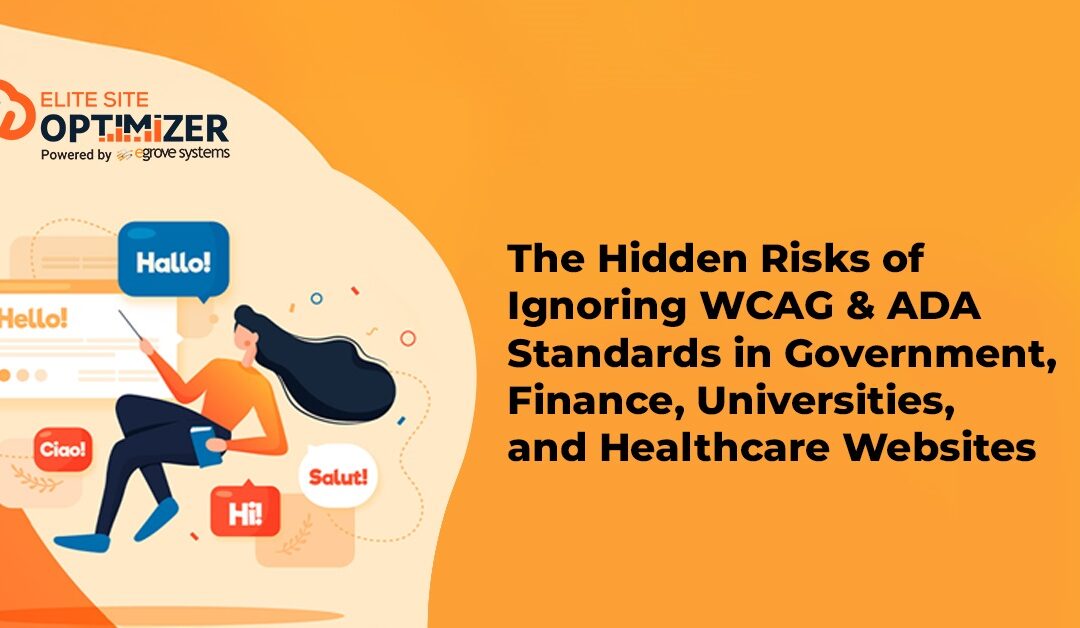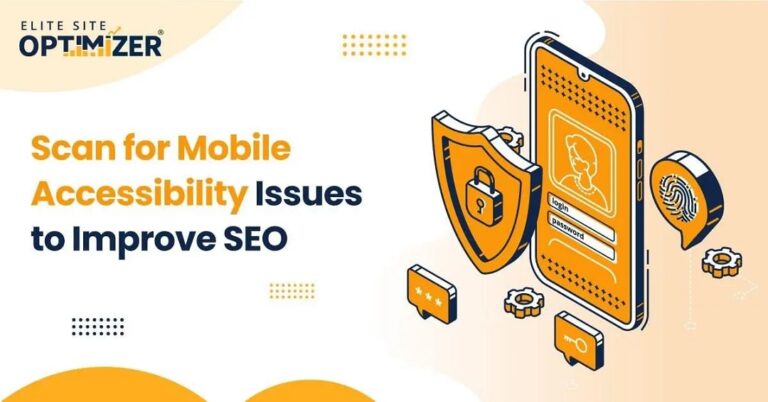For businesses starting out or newly trying to build a digital presence, website design with a focus on accessibility is typically at the bottom of the list. The wilful ignorance of the Web Content Accessibility Guidelines or the Americans with Disabilities Act can prove catastrophic for such websites, especially government, finance, universities, and healthcare websites. Ignorance of these standards is an invitation to website accessibility lawsuits since accessibility is not just a nice-to-have feature, but an essential. Lack of accessibility is risky and unethical, and can cost the business their reputation as well.
Importance Of WCAG and ADA In the Modern Digital Landscape
WCAG explains how to create accessible web content. Governments and other regulators have been improving accessibility standards. In 2024, the U.S. Department of Justice issued new regulations that require compliance with specific accessibility standards for web and mobile content provided by state and local governments. Accessibility regulation is here to stay, and keeping digital accessibility optional is no longer acceptable. At the same time, the WCAG standard has expanded, and the best practice is to use the most recent WCAG baselines, as this allows for future proofing a website.
Risks Of Not Following WCAG and ADA
Not following WCAG guidelines means big trouble, including:
Legal Headaches
Public and private organizations are seeing an increase in lawsuits. Courts and law firms are going after ADA website and app claims, thousands of them. This is now part of corporate risk management discussions around compliance. In addition to the legal fees that stop at trial, settlements and consent decrees can tie an organization into long term remediation efforts, including their own legal fees, third party monitoring and repeat audits that can exceed the initial accessibility costs.
Costs associated with user experience and inclusion
The most obvious and overlooked cost of ignoring WCAG and ADA standards is the exclusion of individuals with visual, auditory, motor, or cognitive impairments from essential services. Inaccessibility can hinder a student’s academic progress in education, cause them to miss appointments or fail to obtain necessary medical information in healthcare, or prevent them from completing a loan or accessing their account details in finance. Exclusion compromises the mission of public organizations and goes against civil rights principles.
Risks In Operations and Procurement
Information and communication technology accessibility is required for federal and state agencies. Program rollouts may be delayed, contracts may be blocked, and non-compliant products may be removed from procurement lists. Inaccessible vendor portals or dashboards can cause contract disputes and impede essential workflows. In short, inaccessible design can endanger vendor relationships and halt government work in its tracks.
Unforeseen technical landmines that make remediation painful
Many organizations sample readability way too late, and after a significant amount of time and expense. There are complex parts that are less obvious but are objectively inaccessible, such as PDFs, interactive charts, poorly coded forms, lack of keyboard operability, videos without captions, and strenuous navigation of complex single-page apps.
Remediation of these parts takes significant time and availability to fit later, and usually is not predictable when part of a cross-team legacy system or vendor platform. Automated scanners also produce a false sense of security. Eventually, businesses may want some human testing along with assistive technologies and physically observed usability tests with real users, especially with the perspective of avoiding ADA compliance legal penalties.
Financial Implications
In terms of direct financial impact, accessibility failures can cost organizations in three ways:
- The cost of immediate remediation includes developer time, consultants, and third-party audits.
- The costs are associated with indirect losses such as applications left behind, frustrated users, and reduced conversions for paywalled services.
- Continued costs such as ongoing checks, accessibility litigation insurance, and lawyer costs.
Stake Of Reputation
Service to the public is promoted by universities, hospitals, banks, and municipal services to boost their reputation by drawing attention to positive functions. An accessibility failure does much more harm than just making a customer unhappy. For instance, someone being unable to apply for financial aid, register for emergency services, or access course materials can incur significant loss. It undermines public confidence and attracts negative media coverage, very often exaggerating operational and legal repercussions.
Improving Accessibility Strategy With Essential Features
- If you want to increase accessibility for your organization some of the strategies that can help are:
- Adopt a WCAG standard for new development and major renovations.
- Do a formal accessibility audit, using a combination of automated scan, manual code review and assistive-technology testing.
- Fix the riskier pages first, like anything that has a login or registration, forms, payment processes, telehealth portals, LMS, anything that allows users to create, collect or transmit their personal information.
- Test with users who use screen readers, alternative input devices or captioning. Use their feedback to make your product better for everyone.
- Don’t use easy overlays as the only solution for accessibility. Use them as a band-aid while real remediation work is happening.
- Train staff and review processes: algorithms and criteria should be added to quality assurance, template design systems and content authoring processes, for example, alt text guidance, using semantic HTML.
- Publish an accessibility statement and roadmap so users know what you are working on, how long it will take to fix known issues and how to report barriers.
- Monitoring and governance can assist in identifying an accessibility compliance owner to take care of the regular audits and consider having an accessibility bug backlog in product management.
Conclusion
Accessibility risk is a genuine concern, posing legal, regulatory, and reputational dangers for government agencies, financial institutions, academic institutions, and healthcare facilities. Following WCAG and ADA mandates offers numerous benefits, including reducing the risk of lawsuits and fines, expanding your audience, improving SEO and UX, and protecting your organization’s mission. Companies that still take no action are risking serious costs that extend far beyond “fixing it later,” as the damage to their reputation can be challenging to overcome.







